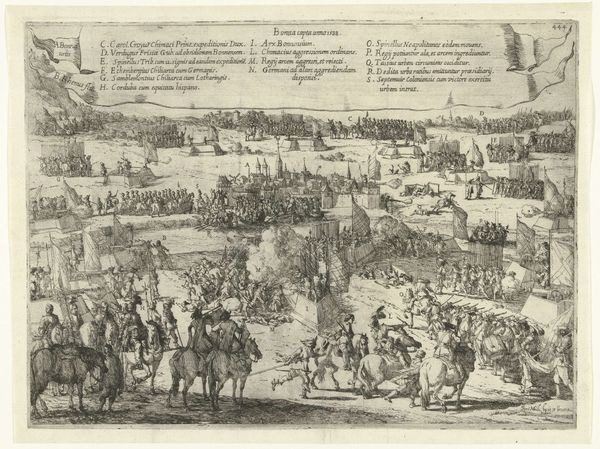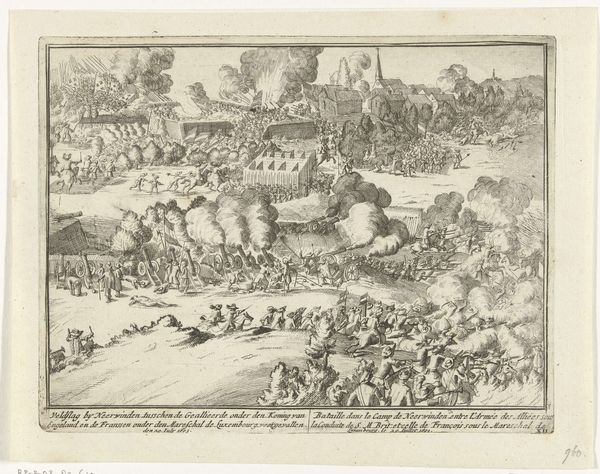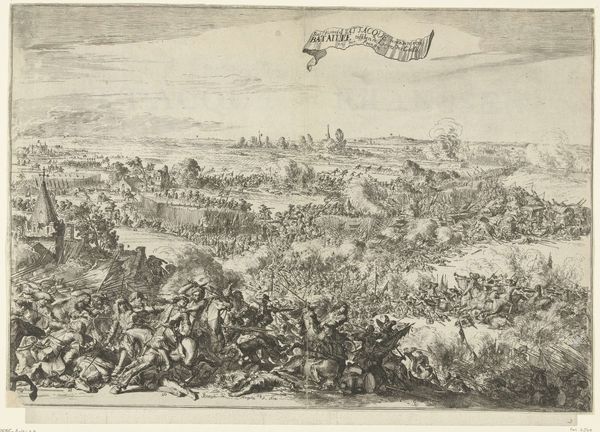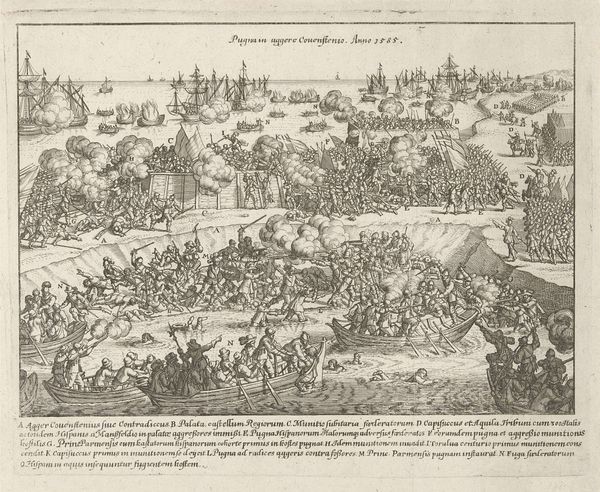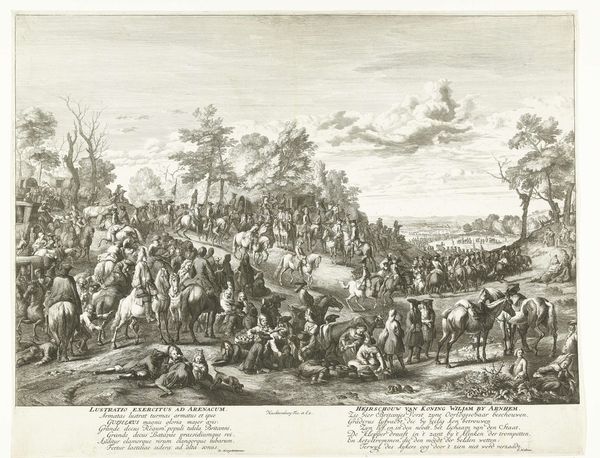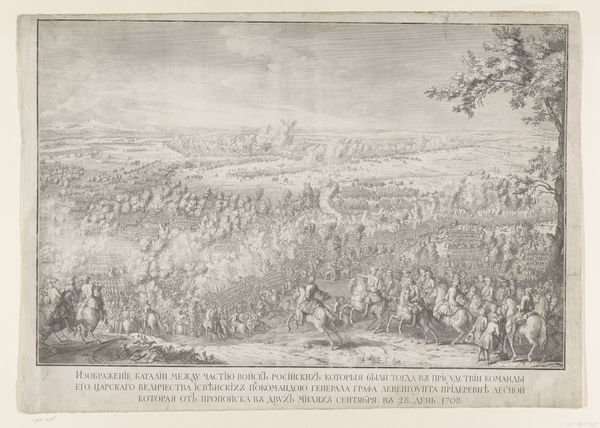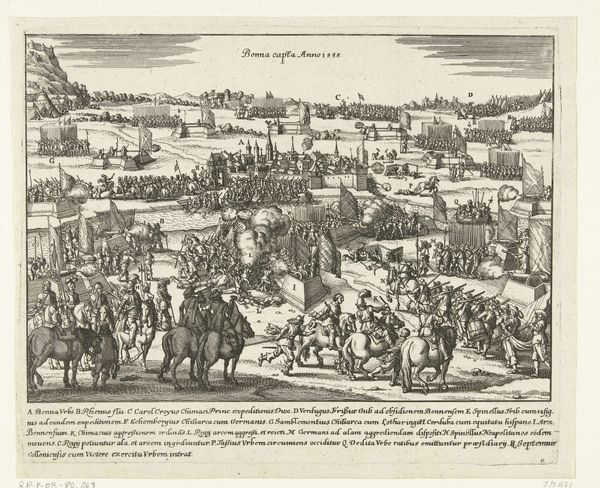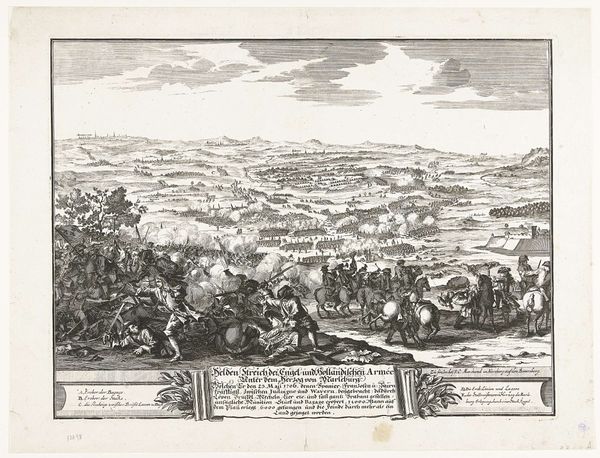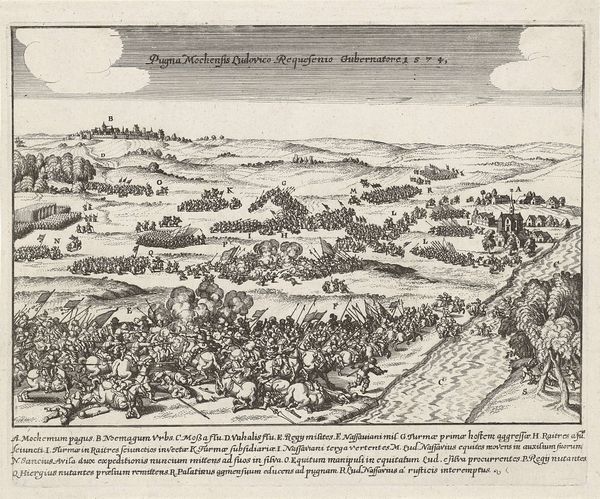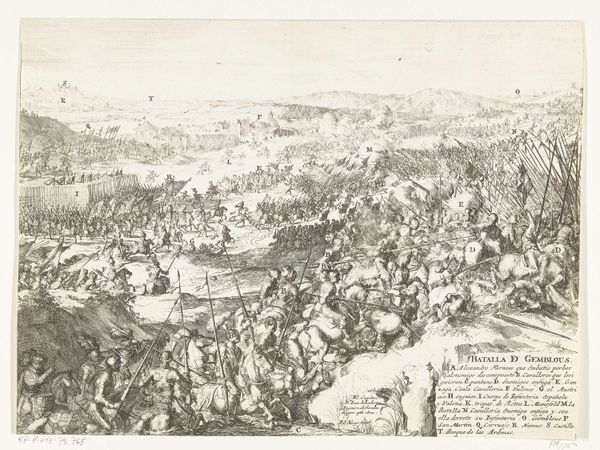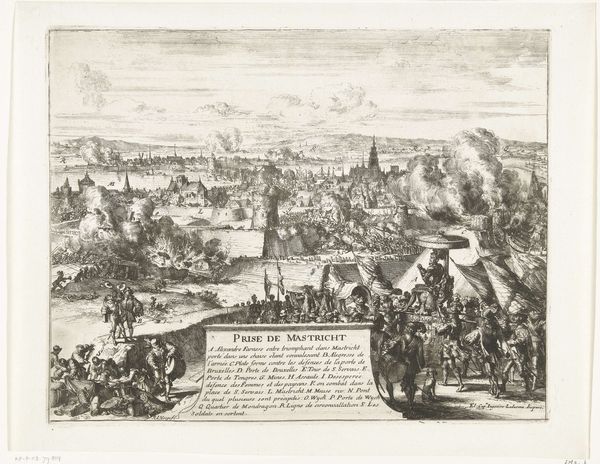
print, engraving
#
baroque
# print
#
line
#
cityscape
#
history-painting
#
engraving
#
realism
Dimensions: height 147 mm, width 194 mm
Copyright: Rijks Museum: Open Domain
This print, made by Jan van Vianen around 1690, captures the defeat of the French and Irish by William III. It was made using etching, a printmaking technique. A metal plate, usually copper, is coated with a waxy, acid-resistant substance. The artist scratches an image into this coating, exposing the metal. Then, acid is applied, biting into the exposed lines. The resulting plate is inked and then pressed onto paper, transferring the image. Look closely, and you'll see a network of fine lines, each one carefully incised. The density and direction of these lines create shading and texture, bringing depth to the scene. Prints like these were relatively inexpensive, and could be produced in multiples. The process made images like this accessible to a wider audience, and provided important social and political commentary during wartime. The etching medium also allowed for detail and precision, showcasing the artist's technical skill, and imbuing the print with historical and cultural significance.
Comments
No comments
Be the first to comment and join the conversation on the ultimate creative platform.


